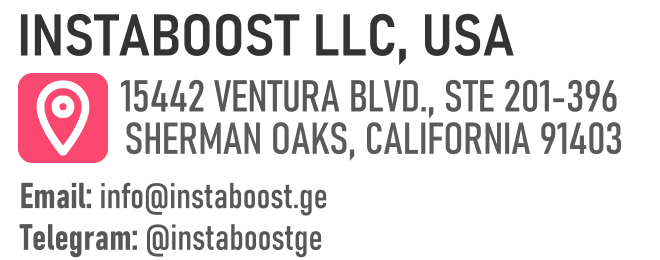What Does Muting Someone on Instagram Do?
Muting someone on Instagram hides their posts and stories from the feed while keeping the connection intact. It acts like a quiet reset that reduces distractions and protects focus without unfollowing or blocking. Results show up quickly as the feed looks cleaner within the first day, helping attention stay on what matters. The smart path is to use muting selectively to align scrolling with real priorities and maintain relationships.
A Quiet Reset for Your Feed – and Your Focus
Muting on Instagram is a precision tool, not a social snub. When you mute someone, you stop seeing their posts or Stories without unfollowing or blocking, which keeps the relationship intact while you curate a calmer feed. That distinction matters for personal sanity and brand strategy because your attention is finite, and the algorithm reads what you linger on. By muting accounts that aren’t matched to your current intent, you train your Explore and
Home feeds toward higher-signal content, and relevance often lifts within a week of consistent scrolling. It’s especially useful if you manage a business profile or creator account and want cleaner input signals for a testing loop, since keeping your analytics focused on true interests helps you see what actually moves retention, saves, and real comments.
Home feeds toward higher-signal content, and relevance often lifts within a week of consistent scrolling. It’s especially useful if you manage a business profile or creator account and want cleaner input signals for a testing loop, since keeping your analytics focused on true interests helps you see what actually moves retention, saves, and real comments.
Muting also pairs well with targeted promotion and creator collabs. You can mute peripheral acquaintances or noisy competitors while staying subscribed to collaborators and qualified partners, tightening feedback on early momentum; in the same spirit, treating your attention like a scarce resource can quietly help you grow your Instagram faster by keeping experiments anchored to what your audience actually responds to. Think of it as a reversible filter with safeguards. You’re protecting focus, not burning bridges.
And because it doesn’t notify the other person, it’s the respectful middle ground between unfollowing and disengaging entirely. If you’re exploring growth tactics like ads, boosts, or influencer seeding, use mute strategically to reduce content fatigue and keep your engagement intake clean. Acceleration works when your baseline feed isn’t cluttered with off-topic signals. For users comparing muting to restricting or blocking, the key difference is visibility and interaction control. Muting affects what you see, not what they can do. Handled thoughtfully, it becomes a quiet lever for better scrolling and sharper results across your Instagram experience.

Signals The Algorithm Can’t Ignore
We ditched best practices and finally saw traction. Once we started muting aggressively – even accounts we like but don’t need in our daily scroll – our Explore page and feed narrowed to what we actually engage with, and the algorithm followed. That’s the quiet power of muting on Instagram. It edits your attention portfolio without burning bridges. For individuals, it means cleaner inputs and fewer knee‑jerk likes that blur your interests. For brands, it means higher‑quality session time and clearer retention signals that stack up.
If you’re running a business profile, pair muting with a short testing loop: mute non‑core categories for two weeks, track shifts in average watch time, save rate, and meaningful comments, then reintroduce selectively. You’ll see it works when it’s matched to intent and measured against outcomes, not vibes. Paid boosts fit here too. A small, well‑targeted promotion on a cleaner feed can speed early momentum without muddying analytics, especially if you choose reputable placements and cap frequency. Creators can use the same approach before a launch – mute noisy peers, follow a few qualified collaborators, and keep DMs open for real conversations.
The non‑obvious insight is that muting isn’t just a social courtesy. It’s an input filter that teaches Instagram what to surface next. By pruning who you listen to, you amplify what your audience hears from you. If optics worry you, remember muting is invisible and reversible, and your best safeguard is transparency in your own content cadence; the same logic applies to anything that distorts signals, including cheap Instagram follower packages, which can bloat counts without improving the edges that matter. Curate first, then post with intent – the platform tends to route that clarity back to you.
Mute With Intent: Build a Cleaner Signal, Not a Smaller Circle
Every playbook expires. Treat muting as a living filter you recalibrate, not a one-time purge, and it turns into a way to tighten your Instagram feedback loop without burning bridges. Start with categories tied to your goals. If you’re building a niche, mute adjacent-but-distracting creators whose posts pull attention without advancing your theme.
If you’re a brand, mute friendly partners whose volume skews your feed signals, then bring them back during collabs to match campaign windows. This isn’t about silencing people. It’s about training the algorithm to prioritize the behaviors you want to measure – saves, replies, and real comments over passive views. Pair muting with a weekly look at Insights and a short testing loop. Unmute 2 – 3 profiles you believe drive quality session time, and remember that paid tactics can sit alongside a quiet feed, just as you might get post likes on Instagram while keeping your inputs narrow to preserve signal.
If retention and meaningful engagement lift, keep them visible. If not, re-mute and shift that attention to creator collabs or targeted promotion where fit and timing are clear. For individuals, the same logic applies. Mute generously during deep-work stretches, then audit your hidden list monthly so you don’t calcify into a bubble. Matched to intent, muting produces cleaner analytics by reducing knee-jerk likes that blur your interests and your Explore page, and it supports steadier growth by making room for posts that earn deliberate engagement. If you lean on paid boosts, fold muting into the plan. Narrow your daily inputs before you promote, so the audience lookalikes you build reflect what you actually value. That’s how a quiet tool compounds into stronger retention signals and a calmer feed.
Mute Isn’t a Morality Test – It’s an Optimization Tool
You can follow the playbook and still feel a bit lost. If you mute broadly without a plan, your feed can slide into an echo chamber that starves you of useful edge cases and fresh context. That’s not a reason to stop using mute. It’s a cue to add intention and measurement. Treat muting like audience targeting. Set clear criteria, run a time‑boxed sprint, then check whether your Explore and Reels Watch History reflect the niche you’re aiming for.
If your “what does muting someone on Instagram do” experiment trims too much serendipity, rebalance by unmuting one or two adjacent creators each week and watch whether real comments and saves improve. For brands, pair muting with clean analytics and retention signals. Mute high‑volume partners during baseline measurement so your feed signals match your core audience, then unmute during creator collabs and targeted promotion windows to match campaign goals. Individuals can do a similar dance by muting accounts that trigger knee‑jerk likes Monday – Friday, then unmuting on weekends to reintroduce discovery safely. If you rely on paid accelerants, use reputable tools that mirror your intended audience and prioritize authentic views for your videos so your signal doesn’t get distorted.
Muting works when your inputs match the personas you’re trying to serve, not when cheap reach floods your signal. A simple safeguard is to keep a “watchlist” saved collection of muted accounts to revisit monthly, and compare session quality – time on posts, shares, profile visits – before and after tweaks. The pushback isn’t that muting is bad. It’s that muting without a testing loop can blunt growth. Done with cadence and criteria, mute becomes a lever for sharper inputs, steadier attention, and better outcomes.
Make the Mute Work Harder After Today
Don’t file this away – fold it into something new. Treat your Instagram mute list like an operating system you keep updating, not a settings page you forget. Start a simple note and tag each mute with why you muted them – volume, topic drift, spoiler risk – what you expect to improve, like feed clarity or Explore relevance, and when you’ll reassess. Pair that filter with actions that strengthen the signal. Save posts that fit your niche, leave real comments on creators you want the algorithm to learn from, and run small targeted promotions when a post already has early retention signals. If you’re a brand, schedule temporary mutes around campaign windows so your signals stay clean while you test creative.
Then unmute partners for collabs to bring back cross‑audience reach. If you use third‑party tools, stick with qualified analytics that show shifts in Explore surfaces and Reels watch patterns; if you need lightweight amplification during tests, even affordable Instagram share packages can be folded into the same measurement loop. Low‑quality dashboards muddy the testing loop and hide what’s actually working. The smart path is measurement. Set a two‑week sprint, compare saves, profile visits, and time watched against your baseline, and check whether your search results and suggested accounts align with your theme.
If things feel too quiet, reintroduce a few edge voices to avoid an echo chamber and keep ideas fresh. Done this way, muting on Instagram isn’t silence – it’s curation that preserves relationships while sharpening your strategy. Keep your safeguards simple. Clear criteria, a set timeframe, and one metric you’ll move. When you can connect a cleaner feed to clearer analytics and steadier engagement, you’ve turned a hidden feature into a repeatable growth lever.















